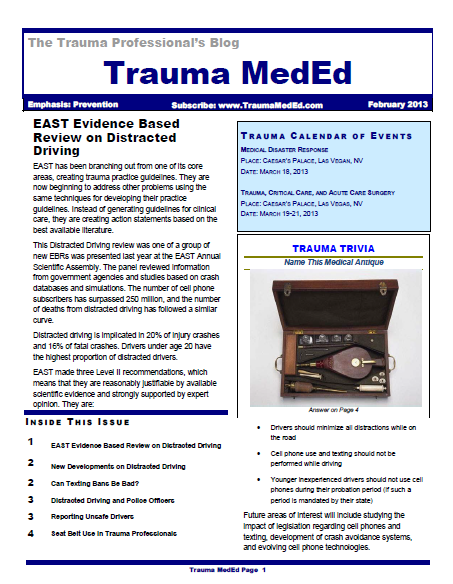The National Association of EMS Physicians and the American College of Surgeons Committee on Trauma have just released a position statement clarifying the use of spine precautions and backboards in trauma patients. Backboards have been used since forever in preparing to move injured patients to hospitals. Unfortunately there are several problems:
- The benefits of backboard use has never really been shown
- Backboards can cause more injury, including pain, agitation, and skin breakdown
- The risks vs benefits of using a backboard are seldom considered
So the following recommendations have been made:
- Appropriate patients for backboard use include those with blunt trauma and altered consciousness, spine pain / tenderness / deformity, neurologic deficit
- Additional patients who might benefit include those with a high energy mechanism and intoxication, inability to communicate, or distracting injury. Note that these leave a lot to the imagination!
- Patients with penetrating injury to head, neck or torso without neurologic deficit do not need a backboard
- Rigid cervical collar alone is sufficient in most patients who are ambulatory at the scene, will undergo a long transport time, or for whom a backboard is not otherwise indicated (see next bullet)
- Backboard is not necessary in patients who meet all the following criteria: GCS 15, no spine tenderness or abnormality, no neurologic deficits, no distracting injury and not intoxicated
- Even if a backboard is not necessary, EMS personnel should always be aware of other spine precautions, including a collar, securing the stretcher, minimizing patient movement, and maintaining inline stabilization when needed
- The backboard should be removed as soon as practical in the ED
Related posts:
Reference: EMS spinal precautions and the use of the long backboard. Prehosp Emerg Care ePub March 4, 2013.



